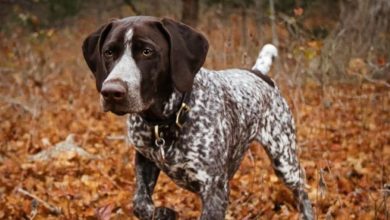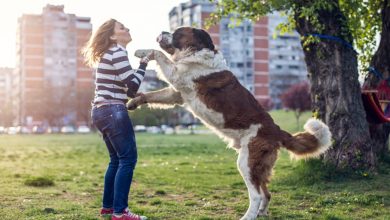How To Break A Gun Shy Dog

1. Introduction
Breaking a gun shy dog is an important task for any dog owner or trainer. Gun shyness can be a serious issue that can prevent your dog from enjoying outdoor activities like hunting and going to the shooting range. It can also be dangerous as a gun shy dog may panic and run away when it hears the sound of gunfire. Fortunately, there are several methods you can use to break a gun shy dog and help them overcome their fear of loud noises. In this article, we will discuss what gun shyness is, the causes of gun shyness, signs of gun shyness, how to treat gun shyness, and safety tips for training a gun shy dog.
2. What is Gun Shyness?
Gun shyness is a fear that dogs develop when they are exposed to loud noises such as gunfire. This fear can cause a dog to become anxious and scared when it hears the sound of gunfire or other loud noises. Gun shy dogs may run away or cower in fear when they hear these sounds, which can be dangerous in certain situations.
3. Causes of Gun Shyness
Gun shyness can be caused by several factors including negative experiences with loud noises, lack of exposure to loud noises at a young age, or genetics. Dogs that have had negative experiences with loud noises may develop a fear of them after being startled or injured by them in the past. Dogs that have not been exposed to loud noises at a young age may also develop a fear of them as they grow older because they are unfamiliar with them. Additionally, some dogs may simply be genetically predisposed to be more sensitive to loud noises than others.
4. Signs of Gun Shyness
The signs of gun shyness vary depending on the individual dog but generally include cowering, hiding, running away, trembling, panting heavily, drooling, and vocalizing (whining or barking). If your dog displays any of these behaviors when it hears loud noises like gunfire then it may be gun shy.
5. Treating Gun Shyness
Treating gun shyness requires patience and understanding on the part of the owner or trainer. The first step is to identify the cause of the fear so that it can be addressed properly. Once the cause has been identified then desensitization and counterconditioning techniques can be used to help your dog become less afraid of loud noises such as gunfire.
6. Desensitization and Counterconditioning Techniques
Desensitization and counterconditioning techniques involve exposing your dog to gradually increasing levels of sound until it no longer reacts negatively to them. For example, you could start by playing recordings of gunshots at low volumes while giving your dog treats or praise for staying calm and relaxed around the noise. You would then gradually increase the volume until your dog no longer reacts negatively to it at all. This process should be done slowly over time so that your dog does not become overwhelmed or scared by the noise again.
7. Use Positive Reinforcement
Positive reinforcement is an important tool for breaking a gun-shy dog as it encourages desirable behaviors while discouraging undesirable ones. Whenever your dog displays positive behaviors such as remaining calm around loud noises then you should reward it with treats or praise so that it learns that these behaviors are desirable and should be repeated in the future.
8. Avoid Punishment and Negative Reinforcement
Punishment and negative reinforcement should never be used when trying to break a gun-shy dog as these methods can only make matters worse by reinforcing negative behaviors such as running away or cowering in fear when exposed to loud noises like gunfire. Instead focus on using positive reinforcement techniques such as rewarding your dog for displaying desirable behaviors when exposed to loud noises like gunshots so that it learns that these are acceptable responses instead of running away in fear or cowering in terror every time it hears a gunshot go off nearby.
9 Safety Tips for Training a Gun Shy Dog
When training a gun-shy dog there are several safety tips you should follow in order to ensure both you and your pet remain safe:
• Always start slow – Start off by exposing your pet to very low levels of sound before gradually increasing the volume over time so that they don’t become overwhelmed or scared again;
• Always use positive reinforcement – Reward your pet with treats or praise whenever they display desirable behaviors such as remaining calm around loud noises;
• Never punish – Punishing your pet will only reinforce negative behaviors such as running away in fear or cowering in terror every time they hear gunfire;
• Make sure you have proper safety equipment – Make sure you have proper safety equipment such as ear muffs for both you and your pet when training at louder levels;
• Monitor your pet’s behavior – Pay close attention to how your pet is reacting during training sessions so that you can adjust accordingly if needed;
• Have patience – Breaking a gun-shy dog takes time so don’t expect results overnight;
• Seek professional help – If needed seek out professional help from an experienced animal behaviorist who has experience dealing with gun-shy dogs;
• Take breaks – Make sure you take breaks during training sessions so that both you and your pet don’t become overwhelmed or exhausted;
• Be prepared for setbacks – Setbacks are normal during training sessions so don’t get discouraged if progress isn’t happening as quickly as desired;
• Have fun! – Above all else remember that breaking a gun-shy dog should be fun for both you and your pet so make sure you enjoy each session together!
< h 2 > 10 . Preparing Your Dog for the Field or Range < / h 2 >
Once you have successfully broken your gun-shy dog then there are several steps you should take before taking them out into the field or range:
• Make sure they are comfortable with their surroundings – Before taking them out into unfamiliar environments make sure they are comfortable with their surroundings by taking them on walks around their new environment;
• Introduce them slowly – When introducing them into new environments start slowly by exposing them only briefly before gradually increasing their exposure over time;
• Familiarize them with firearms – Before taking them out into areas where firearms may be present make sure they are familiar with firearms by having someone fire blanks nearby while rewarding them for staying calm;
• Reward good behavior – Whenever they display good behavior make sure you reward them with treats or praise so that they learn what behaviors are desirable;
• Have patience – Breaking a gun-shy dog takes time so don’t expect results overnight;
• Seek professional help – If needed seek out professional help from an experienced animal behaviorist who has experience dealing with gun-shy dogs;
• Have fun! – Above all else remember that breaking a gun-shy dog should be fun for both you and your pet so make sure you enjoy each session together!
< h 2 > 11 . Conclusion < / h 2 > Breaking a gun-shy dog is an important task for any owner or trainer but one that requires patience and understanding on their part in order to achieve success! By following the tips outlined above owners will have an easier time helping their pets overcome their fears allowing them to enjoy outdoor activities like hunting and going to the shooting range safely once again!



